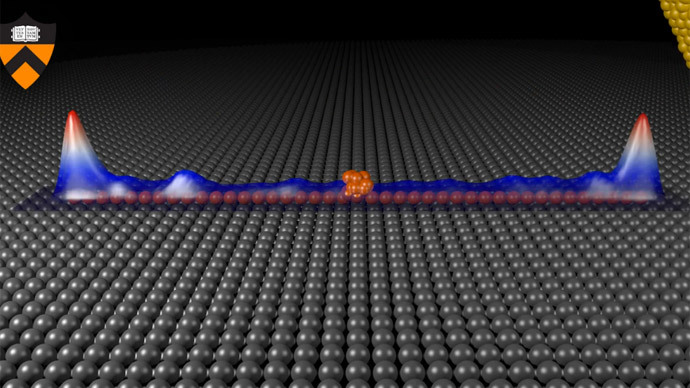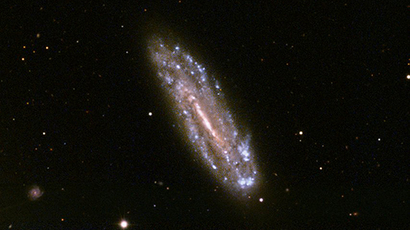Finally! Sub-atomic particle observed, both matter & antimatter

After 80 years of painstaking experimentation, scientists have directly observed a sub-atomic particle that is its own antiparticle. The breakthrough promises a leap forward in quantum computing and potentially shows the path to finding dark matter.
The particles are called the Majorana fermions, after the Italian scientist who proposed their existence back in 1937. Quantum theory was in its infancy at the time, and scientists first theorized that antimatter existed: an opposite particle to the commonly-observed electrons and other particles were necessary for quantum equations to work.
Although since then many forms of antimatter have been observed, the Majorana fermion remained elusive for decades, partially because it virtually doesn't interact with regular particles. A team of researchers at the Delft University of Technology in the Netherlands reported a possible discovery of evidence of the Majorana back in 2012, but other scientists pointed out that their results could have been caused by other phenomena.
Now a team led by Professor Ali Yazdani of Princeton University and his team, which included colleagues from University of Texas-Austin, seem to have pinpointed the particle in an experiment that required months of careful adjustments, a two-story tall microscope floating in an ultralow-vibration lab at the campus and an environment of almost absolute cold. They published the results in the October 2 issue of the journal Science.
The setup was first proposed by Russian-born physicist Aleksey Kitaev, now a professor at the University of California-Santa Barbara, who predicted in 2001 that Majoranas would emerge on the ends of a superconductuve wire under certain magnetic conditions. Given a certain length of the wire, these particles would not annihilate each other due to spatial separation.
The Yazdani team undertook to do exactly that in 2013 after winning a $3 million grant from the Office of Naval Research. They took an ultra-pure crystal of lead, in which atoms naturally align into ridges and placed on one of them a wire of iron, a ferromagnetic material, which was just one atom wide and about three atoms wide. The crystal was then cooled to -272 degrees Celsius, just one degree above absolute zero, to induce superconductivity.
It took almost two years of meticulous work to precisely match the conditions required for the Majorana fermions to emerge, after which the scanning-tunneling microscope was able to detech an electrically neutral signal at the ends of the wire – just as predicted.
"This is the most direct way of looking for the Majorana fermion since it is expected to emerge at the edge of certain materials," Yazdani said. "If you want to find this particle within a material you have to use such a microscope, which allows you to see where it actually is."
The experiment not only confirms that the world indeed works the way quantum physicists thought it did, but has potential for practical applications in quantum computing. A quantum computer operates qubits, basic elements that can represents not only ones and zeroes, but also a quantum state of superposition that is a one and a zero at the same time. The biggest potential field of application of quantum computing is encryption and code breaking.
But quantum superposition states notoriously easily collapse into conventional behavior, so scientists are yet to find the right material to serve as qubits. Stable Majoranas could do the trick (which probably explains why the US military showed such an interest in the research).
“This is more exciting and can actually be practically beneficial,” Yazdani said, “…because it allows scientists to manipulate exotic particles for potential applications, such as quantum computing.”
The team is particularly excited that they could produce Majoranas without the use of any exotic materials.
“We realized that Majoranas could be present even in the common form of magnetism found in iron," said Allan MacDonald, a physicist who led the Austin team.
The observation of the Majorana fermion has opened the door for other theories as well. Scientists are already seriously considering that neutrinos and anti-neutrinos could be one particle and a kind of a Majorana. The properties and behavior of a neutrino are not dissimilar to that of the Majorana fermiones.
Furthermore, Majoranas are a strong candidate for dark matter – the mysterious substance that comprises most of the universe yet remains elusive because it doesn't interact with regular mater in any way but through gravity.













